Numerous sacred locations with significant religious and historical significance may be found in India, a country rich in traditions, spirituality, and diversity. The Jyotirlingas are regarded as one of the most important shrines of Lord Shiva among these. These heavenly temples are a source of devotion, culture, and spirituality and have drawn millions of worshippers. However, what are Jyotirlingas, and why do Hindus value them so highly?
What is a Jyotirlinga?
The Sanskrit terms “Jyoti,” which means light, and “Linga,” which alludes to the famous image of Lord Shiva, are the roots of the name “Jyotirlinga.” When taken as a whole, it means “the pillar of light.” In Hinduism, a Jyotirlinga is a revered shrine where Lord Shiva appeared.
12 Jyotirlingas in India have their meaning, background, and relationship to different Lord Shiva myths and legends. If you check the 12 Jyotirlinga in India map, you will find they are spread over different places. Since these temples are dispersed throughout India, from the south to the north, many devotees find that visiting all twelve is a spiritually enlightening experience.
List of the 12 Jyotirlingas in India
1. Somnath, Gujarat
2. Mallikarjuna, Andhra Pradesh
3. Mahakaleshwar, Madhya Pradesh
4. Omkareshwar, Madhya Pradesh
5. Kedarnath, Uttarakhand
6. Baidyanath, Jharkhand
7. Nageshwar, Gujarat
8. Rameswaram, Tamil Nadu
9. Grishneshwar, Aurangabad
10. Trimbakeshwar, Nasik
11. Kashi Vishwanath, Varanasi
12. Bhimashankar Jyotirlinga, Maharashtra
Here’s a look at the 12 Jyotirlinga locations in India, which are dispersed around the nation, and each has a profound spiritual importance and history:
1. Somnath, Gujarat
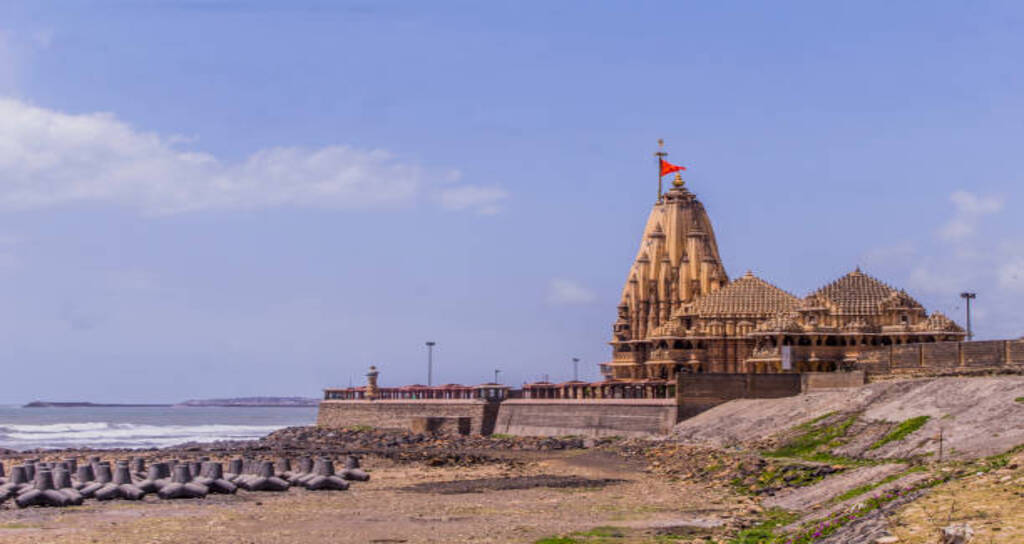
In Hinduism, the Somnath Jyotirlinga is extremely important and is thought to be the first of all Jyotirlingas. It is said to be where, following the lifting of his curse, Lord Shiva showed his divine form to the divinity, Soma (the Moon God).
Open Timings: Darshan timings are from 6:00 AM to 10:00 PM. Aarti timings are as follows: Morning Aarti: 7:00 AM, Noon Aarti: noon, Evening Aarti: 7:00 PM
2. Mallikarjuna, Andhra Pradesh
This Jyotirlinga, located in the Srisailam hills, is thought to be where Lord Shiva and Goddess Parvati resided while they were in their celestial guises. In South India, it is among the most venerated pilgrimage destinations.
Open Timings: 5:00 AM to 4:30 PM and 5:20 PM to 10:00 PM. 5:15 AM – 6:30 AM: Morning Aarti (Maha Mangala Aarti), 5:20 PM – 6:00 PM: Evening Aarti (Maha Mangala Aarti).
Jyotirling Tour & Travels
Wide Selection from Sedan to spacious MPV's, Tempo Traveller, Mini Bus, AC Co
Taxi service in Ujjain (Sumit Vaishnav)
Welcome to Taxi Service in Ujjain, your go-to solution for dependable and aff
Star Travels Ujjain
Star Travels, a leading travel agency in Ujjain, is your one-stop shop for al
Cab Taxi Services Ujjain
Cab Taxi Ujjain is your trusted partner for reliable and convenient transport
Ujjain Taxi Online (Sapna Soni)
Sapna Soni Taxi Services offers a reliable and comfortable ride experience, a
3. Mahakaleshwar, Madhya Pradesh
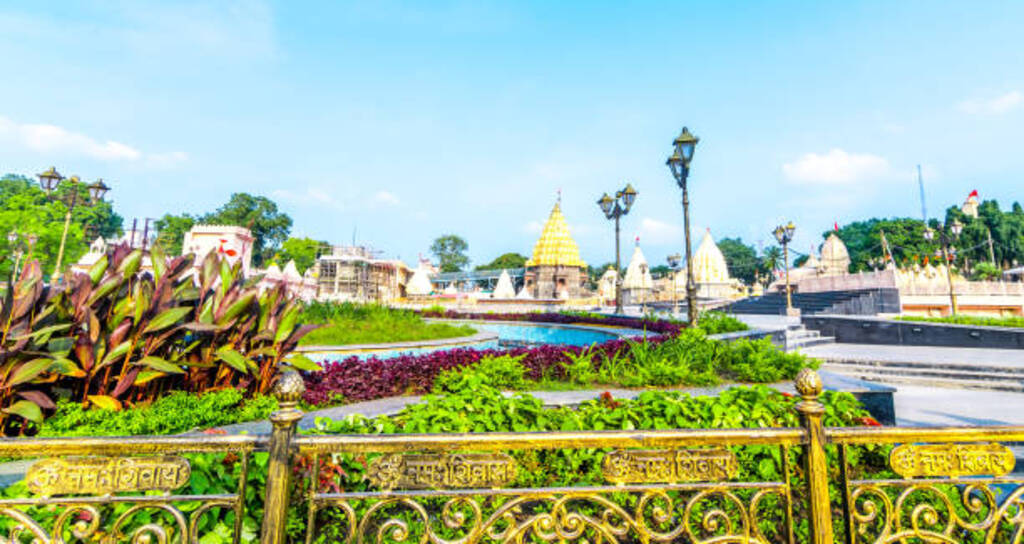
The Mahakaleshwar temple, situated in the historic city of Ujjain, is well-known for its exquisite architecture and association with the cosmic cycle of creation, preservation, and destruction. The god is supposed to be “Swayambhu” (self-manifested) in this and only a few temples.
Open Timings: The temple generally opens at 4:00 AM and closes at 11:00 PM. Bhasma Aarti from 4:00 AM to 6:00 AM, Naivedya Aarti at 7:30 AM, and Sandhya Aarti at 5:00 PM.
4. Omkareshwar, Madhya Pradesh
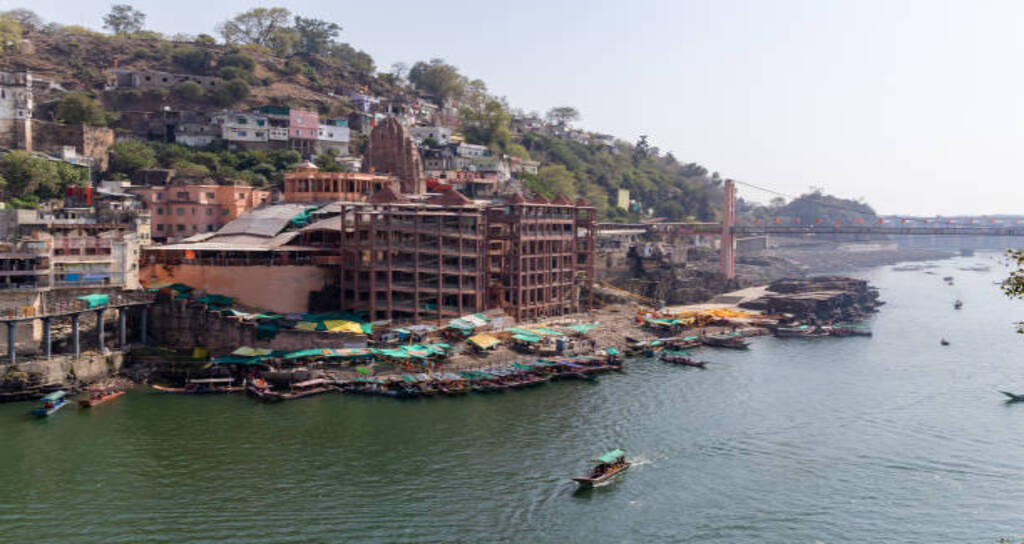
Omkareshwar is situated on an island that resembles the holy Hindu letter “Om.” A significant religious and spiritual hub, this temple is devoted to Lord Shiva in the shape of the Omkar Jyotirlinga.
Open Timings: 5:00 AM to 3:50 PM, 4:15 PM to 9:30 PM. Mangal Aarti at 5:00 AM, Jalabhishek from 5:30 AM to 12:25 PM, and Shayan Aarti at 8:20 PM.
5. Kedarnath, Uttarakhand
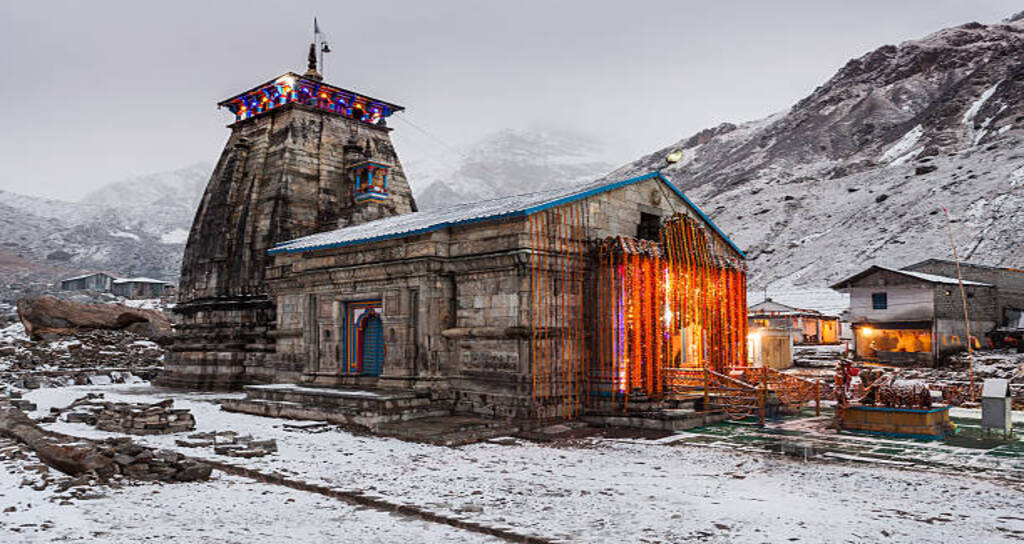
One of the most challenging and fruitful pilgrimages is Kedarnath, in the snow-capped Himalayan mountains. Dedicated to Lord Shiva, this Jyotirlinga strongly connects to the Mahabharata. You can reach Kedarnath by booking a cab service. Check out the car rental services in Uttarakhand from reputed vendors for best services.
Open Timings: May 10, 2024 – November 3, 2024: 6:00 AM to 3:00 PM, 5:00 PM to 7:00 PM. Morning Aarti (Maha Abhishek): 4:00 AM, Evening Aarti (Shayan Aarti): 7:00 PM.
6. Baidyanath, Jharkhand
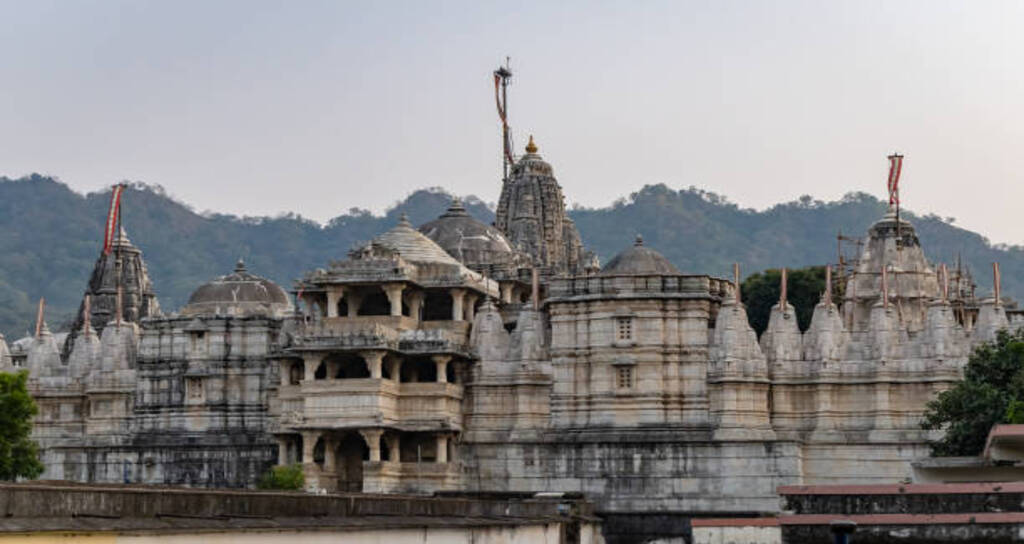
According to legend, Lord Shiva healed the demon Ravana’s illnesses at Baidyanath Jyotirlinga. During the auspicious holiday of Shravan, the Deoghar shrine draws many pilgrims.
Open Timings: 4:00 AM to 3:30 PM, 6:00 PM to 9:00 PM. Morning Aarti: 4:00 AM, Noon Aarti: noon, Evening Aarti: 6:00 PM.
7. Nageshwar, Gujarat
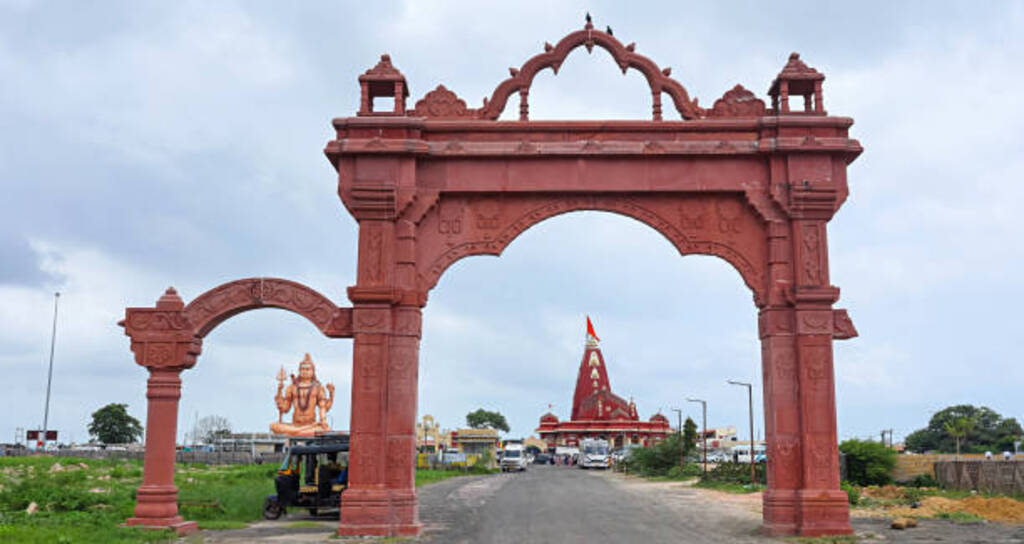
It is thought that Lord Shiva defeated the demon Daruka at Nageshwar when he appeared as Nageshwar. This temple is close to the holy city of Dwarka, which is strongly connected to Lord Krishna.
Open Timings: 6:00 AM to 12:30 PM, 5:00 PM to 9:30 PM. Morning Aarti at 6:00 AM, Evening Aarti at 7:00 PM, and Night Aarti at 9:00 PM.
8. Rameswaram, Tamil Nadu
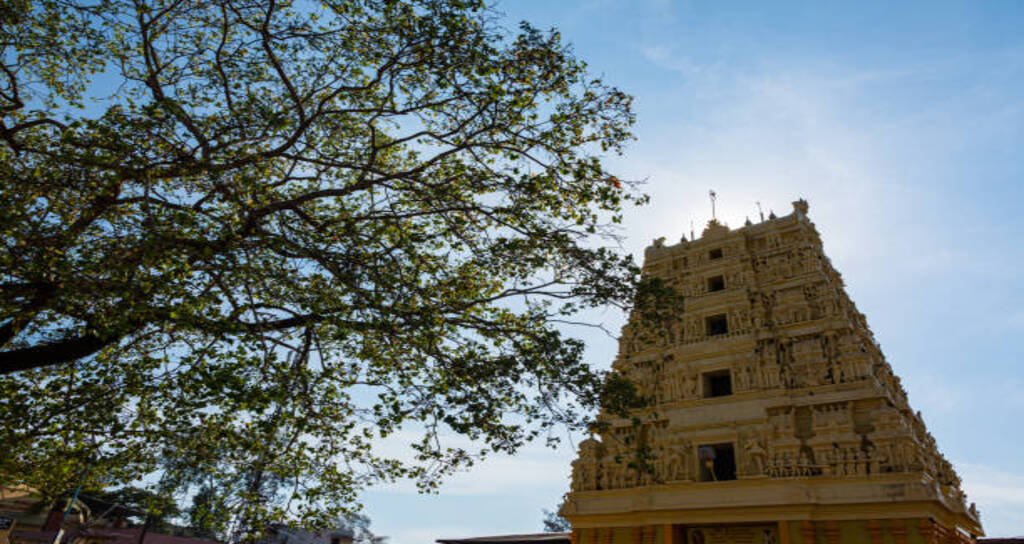
This Jyotirlinga is well-known for its connection to the epic Ramayana and is located on the island of Rameswaram. Before starting his fight with Ravana, Lord Rama is said to have worshipped Lord Shiva here.
Open Timings: 5:00 AM to 1:00 PM, 3:00 PM to 9:00 PM. Palliyarai Deepa Arathana: 5:00 AM, Spadigalinga Deepa Arathana: 5:10 AM, Thiruvananthal Deepa Arathana: 5:45 AM, Vila Pooja: 7:00 AM, Kalasanthi Pooja: 10:00 AM, Uchikala Pooja: noon, Sayaratcha Pooja: 6:00 PM, Arthajama Pooja: 8:30 PM, Palliyarai Pooja: 8:45 PM.
Rameswaram Dolphin travels
🚗 All type Vehicles
🚕 Honeymoon trips
🚖 cab booking
Rameshwaram Tourism
Top Rameshwaram Travel Agency | Customized Temple & Sightseeing Packages<
Happy Tour's and travels
Established in 1994 in Madurai, Happy Tours and Travels is your premier one-s
Rameswaram Krithik tours and travels (Rameswaram cab booking)
Embark on a spiritual journey to Rameswaram, the holy island of Tamil Nadu, w
PRS Travels Rameshwaram
Rameshwaram Cab Booking - Car Rental - auto service Local & Outstation Ou
Latha cabs tours and travels
Welcomeing like a guest and going as a friend....our Moto customer satisfacti
9. Grishneshwar, Aurangabad
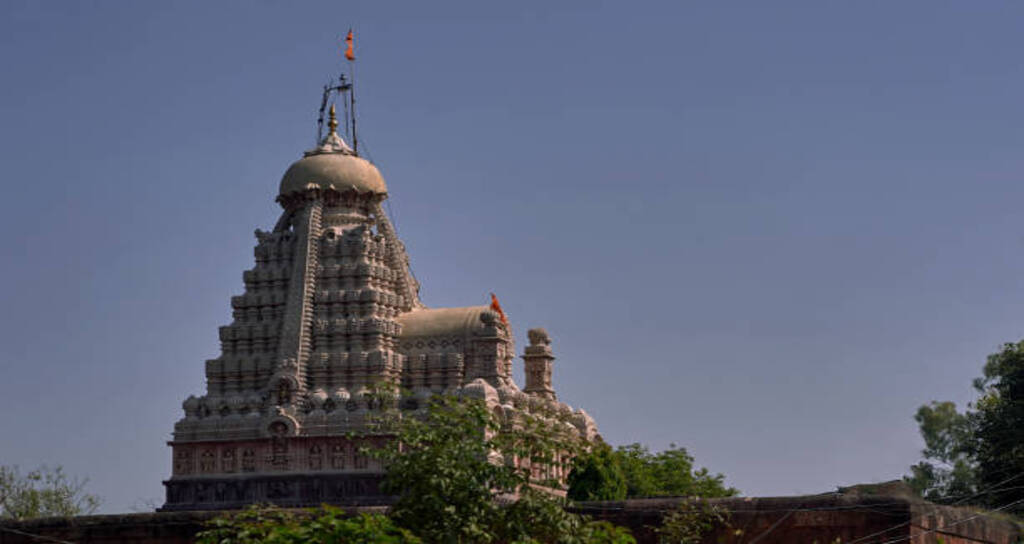
One of Maharashtra’s most treasured locations is the Grishneshwar temple, close to the Ellora Caves. Legend has it that a woman named Kusuma found this Jyotirlinga.
Open Timings: The temple usually opens around 5:30 AM and closes by 9:30 PM. However, timings might differ on special occasions and festivals.
10. Trimbakeshwar, Nasik
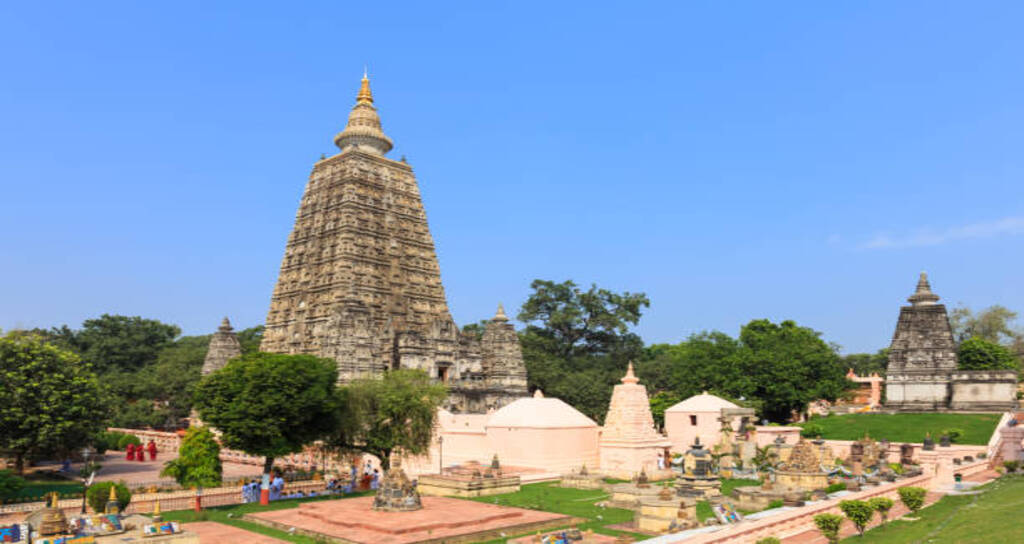
A well-known pilgrimage destination close to the Godavari River is Trimbakeshwar. The Trimbakeshwar Jyotirlinga symbolizes the trinity of Shiva, Vishnu, and Brahma.
Open Timings: 5:30 AM to 9:00 PM. Mangal Aarti at 5:30 AM and Evening Aarti at 7:00 PM.
11. Kashi Vishwanath, Varanasi
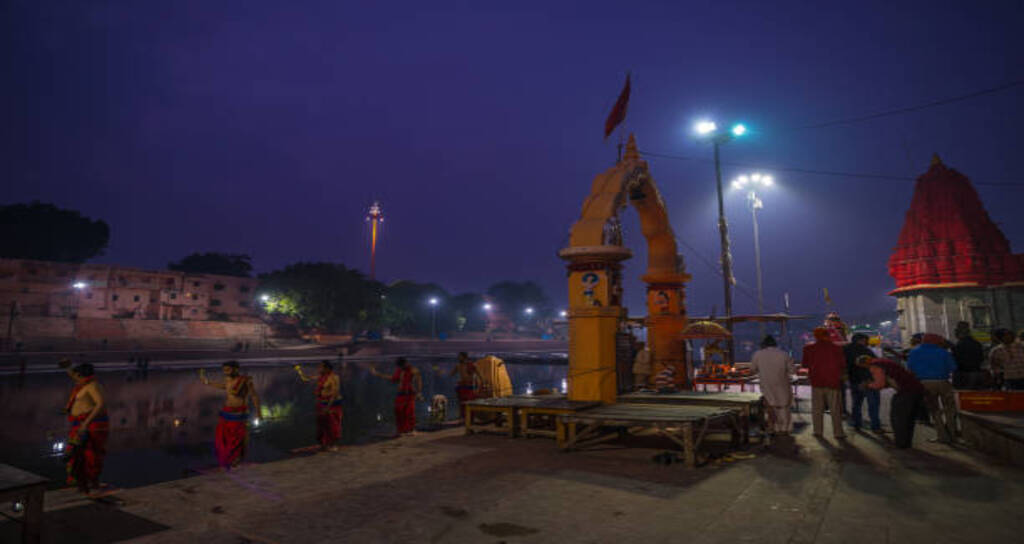
One of the most revered towns in India, Varanasi, is home to the Kashi Vishwanath temple. Visitors to this temple are said to achieve moksha or freedom from the cycle of life and death.
Open Timings: 2:30 AM to 11:00 PM, Mangala Aarti at 3:00 AM, Bhog Aarti at 11:15 AM, and Sandhya Aarti at 7:00 PM
BEST VARANASI TOUR
We are a leading travel company specializing in immersive tours of Varanasi a
Bhakti Yatra Travels Pvt Ltd
Bhakti Yatra Travels is a leading pilgrimage tour operator dedicated to provi
JANXII TOURS & TRAVELS | CABS SERVICES | TOURS PACKAGES FOR VARANASI, PRAYAGRAJ, AYODHYA | BOAT RIDE | TOUR GUIDE |
Janxii Tours and Travels is your one-stop solution for all your travel needs
Tempo Traveller & Bus booking Varanasi
Tempo Travellers Booking is your premier choice for seamless and comfortable
Premium Tour & Travels | Best Travel Agency in Varanasi | Car Rental in Varanasi | Tour Operator in Varanasi | Airport Taxi
Premium Tour and Travels is your gateway to the enchanting city of Varanasi,
MAYUR TRAVELS
Mayur Travels is a trusted travel agency in Varanasi, offering a variety of s
12. Bhimashankar Jyotirlinga, Maharashtra
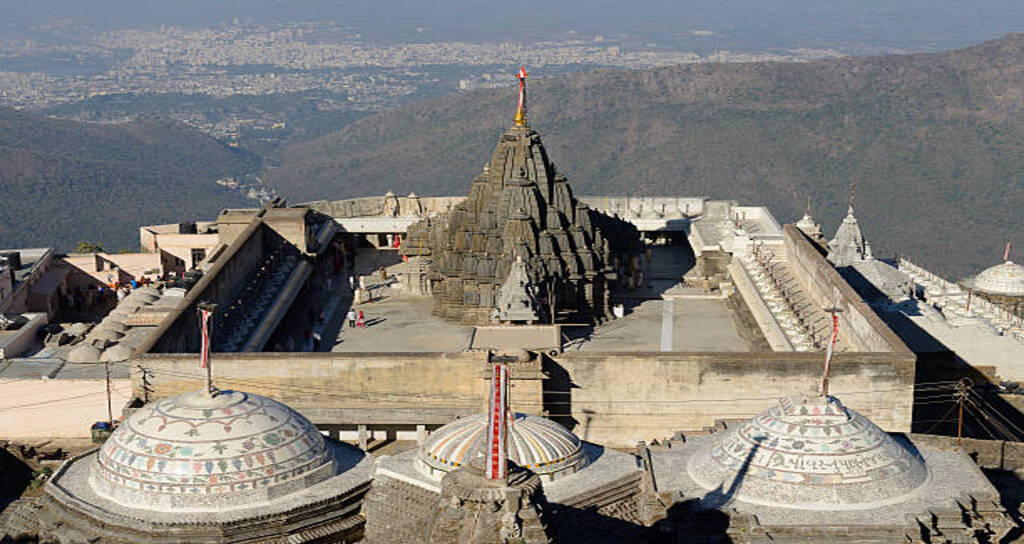
Situated in a rural area of Maharashtra, Bhimashankar, also called the Bhimashankar Jyotirlinga, is renowned for its serene and spiritual atmosphere. It is a hidden gem for Shiva enthusiasts because it is rarely marketed.
Open Timings: 4:00 AM to 3:30 PM, 6:00 PM to 9:00 PM. Morning Aarti: 4:00 AM, Noon Aarti: noon, Evening Aarti: 6:00 PM.
The Pilgrimage’s Spiritual Journey
In addition to being a religious activity, a pilgrimage to India’s 12 Jyotirlingas is a means of achieving spiritual enlightenment. Every temple allows believers to immerse themselves in devotion, submission, and introspection while symbolizing a different facet of Lord Shiva’s boundless nature. Pilgrims frequently travel long and challenging distances to visit these isolated temples, where people feel closer to the divine.
Pilgrims frequently travel long and challenging distances to visit these isolated temples, where people feel closer to the divine.
The visit to these temples brings a profound sense of tranquility and spiritual fulfillment in addition to its historical and mythological significance.
Conclusion
The twelve Jyotirlingas in India are symbols of the eternal and formless Lord Shiva and are more than just temples. Millions of devotees go from all over the world to visit these hallowed shrines because they each contain a mystical link that transcends time and location.
The trip to these holy locations provides a chance to encounter Lord Shiva’s heavenly presence in its most pristine form, regardless of whether you’re a spiritual seeker or just looking for peace.
A visit to the Jyotirlingas in India list is more than a physical journey—it’s a path to discovering the light within us all.
To ensure a pleasant and relaxed trip to the Jyotirlinga pilgrimage, you can book trusted car rental services with Safarcabby. SafarCabby, offer consistently good condition cars, professional driver, and affordable packages to pilgrimage sites like Ujjain, Varanasi, and Rameswaram, and beautiful drives in Uttarakhand.
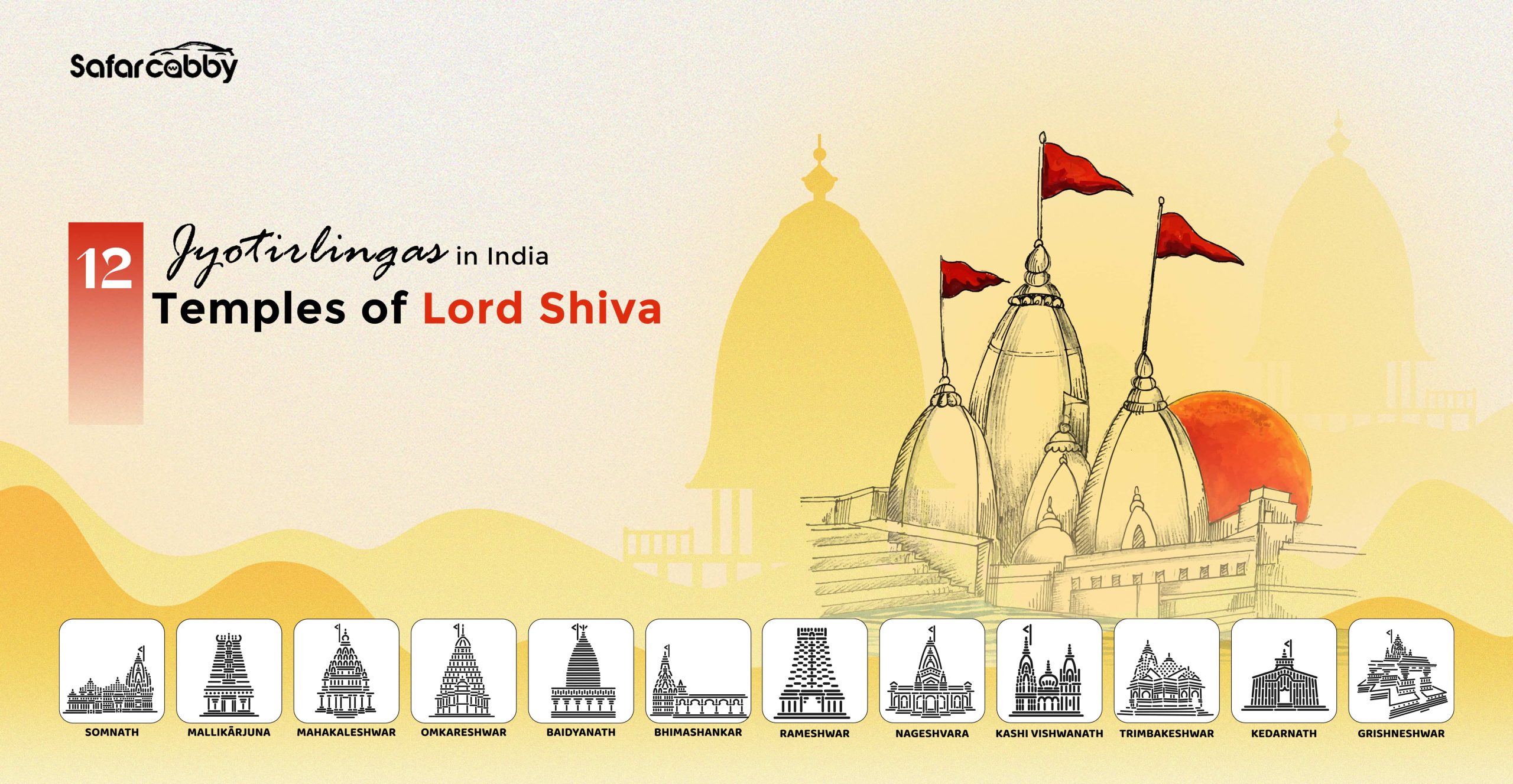


















Featured Posts
Best Places for Short Trips in India
India is a highly diverse nation, which offers a wide range of destinations to go on short holidays. It could be a weekend adventure you are planning, family tour, or even an adventure on your own, there are an array of short trip destinations in India that provide the perfect blend of adventure and leisure.. <a title="Best Places for Short Trips in India" class=" fw-normal text-decoration-none read-more" href="https://www.safarcabby.com/blog/places-for-short-trips-in-india/" aria-label="Read more about Best Places for Short Trips in India">[...]</a>
Top Places To Visit In Gujarat For A Memorable Trip
On the west coast of India, Gujarat is a blend of history, culture, religion and modernity in a cool manner. It has got vibrant festivals, historic background and chilled out natural attractions, hence there is something to suit everybody. Whether you want to take a long road trip or a run away, wherever you go. <a title="Top Places To Visit In Gujarat For A Memorable Trip" class=" fw-normal text-decoration-none read-more" href="https://www.safarcabby.com/blog/top-places-to-visit-in-gujarat/" aria-label="Read more about Top Places To Visit In Gujarat For A Memorable Trip">[...]</a>
Waterfall in Goa – A Nature Lover’s Paradise
Goa is basically not only about nightlife and beaches, it is basically also known for the breathtaking waterfalls which appear during the monsoon season. I believe moreover, Visiting a waterfall in Goa is basically one of the best experiences especially for travelers looking for adventure, tranquility, and raw beauty. Goa has hidden spots and well-known. <a title="Waterfall in Goa – A Nature Lover’s Paradise" class=" fw-normal text-decoration-none read-more" href="https://www.safarcabby.com/blog/waterfall-in-goa/" aria-label="Read more about Waterfall in Goa – A Nature Lover’s Paradise">[...]</a>
Best Places to Visit in Goa
Goa is among the most cherished vacation spots in India, providing an ideal mix of sunshine, beaches, excitement, and cultural experiences. Although numerous individuals connect Goa with celebrations and nightlife, it is equally a fantastic location for families. With beaches, temples, wildlife reserves, and forts, Goa offers numerous attractions that will provide your family with. <a title="Best Places to Visit in Goa" class=" fw-normal text-decoration-none read-more" href="https://www.safarcabby.com/blog/best-places-to-visit-in-goa/" aria-label="Read more about Best Places to Visit in Goa">[...]</a>
Top 10 Places to Visit in Jaipur at Night
Jaipur, the capital of Rajasthan, is renowned as the Pink City due to its distinctive rose-colored buildings and regal allure. During the day, Jaipur tourist places focus on discovering historical forts, lively markets, and cultural heritage, but once the sun sets, the city assumes a completely different character. The glowing lights, bright landmarks, and lively. <a title="Top 10 Places to Visit in Jaipur at Night" class=" fw-normal text-decoration-none read-more" href="https://www.safarcabby.com/blog/places-to-visit-in-jaipur-at-night/" aria-label="Read more about Top 10 Places to Visit in Jaipur at Night">[...]</a>
Jungle Safari in India: Explore the Wild Like Never Before
India boasts incredibly diverse wildlife and vast, green forests. From the magnificent Bengal tiger to the shy leopards, elephants, and rhinoceroses, a jungle safari in India offers an unforgettable adventure for both nature enthusiasts and those seeking excitement. India, with its multitude of national parks and wildlife sanctuaries, is a perfect place for those yearning. <a title="Jungle Safari in India: Explore the Wild Like Never Before" class=" fw-normal text-decoration-none read-more" href="https://www.safarcabby.com/blog/jungle-safari-in-india/" aria-label="Read more about Jungle Safari in India: Explore the Wild Like Never Before">[...]</a>
Recent Posts
Places to Visit in Varanasi – Discover Ghats, Temples & Culture
Varanasi, alternately known as Kashi or Banaras, is not merely a city but rather a spiritual encounter for all those who visit it, situated on the banks of the holy Ganga river. It is one of the oldest living cities in the world. Varanasi is a place of worship and pilgrimage, tradition and culture and. <a title="Places to Visit in Varanasi – Discover Ghats, Temples & Culture" class=" fw-normal text-decoration-none read-more" href="https://www.safarcabby.com/blog/places-to-visit-in-varanasi-temples-ghats-culture/" aria-label="Read more about Places to Visit in Varanasi – Discover Ghats, Temples & Culture">[...]</a>
Places to Visit in Dwarka, Gujarat
Dwarka is a town located along the western coast of Gujarat; it is more than a town; it is a story, a legend and a place of worship at the same time. Dwarka, the supposed original residence of Lord Krishna has b een visited by dharma followers, travellers, and the inquisitive over the centuries. When. <a title="Places to Visit in Dwarka, Gujarat" class=" fw-normal text-decoration-none read-more" href="https://www.safarcabby.com/blog/places-to-visit-in-dwarka-gujarat/" aria-label="Read more about Places to Visit in Dwarka, Gujarat">[...]</a>
Best Places for Short Trips in India
India is a highly diverse nation, which offers a wide range of destinations to go on short holidays. It could be a weekend adventure you are planning, family tour, or even an adventure on your own, there are an array of short trip destinations in India that provide the perfect blend of adventure and leisure.. <a title="Best Places for Short Trips in India" class=" fw-normal text-decoration-none read-more" href="https://www.safarcabby.com/blog/places-for-short-trips-in-india/" aria-label="Read more about Best Places for Short Trips in India">[...]</a>
Top Places To Visit In Gujarat For A Memorable Trip
On the west coast of India, Gujarat is a blend of history, culture, religion and modernity in a cool manner. It has got vibrant festivals, historic background and chilled out natural attractions, hence there is something to suit everybody. Whether you want to take a long road trip or a run away, wherever you go. <a title="Top Places To Visit In Gujarat For A Memorable Trip" class=" fw-normal text-decoration-none read-more" href="https://www.safarcabby.com/blog/top-places-to-visit-in-gujarat/" aria-label="Read more about Top Places To Visit In Gujarat For A Memorable Trip">[...]</a>
Waterfall in Goa – A Nature Lover’s Paradise
Goa is basically not only about nightlife and beaches, it is basically also known for the breathtaking waterfalls which appear during the monsoon season. I believe moreover, Visiting a waterfall in Goa is basically one of the best experiences especially for travelers looking for adventure, tranquility, and raw beauty. Goa has hidden spots and well-known. <a title="Waterfall in Goa – A Nature Lover’s Paradise" class=" fw-normal text-decoration-none read-more" href="https://www.safarcabby.com/blog/waterfall-in-goa/" aria-label="Read more about Waterfall in Goa – A Nature Lover’s Paradise">[...]</a>
Places to Visit in Monsoon in Maharashtra – Top Monsoon Destinations
The prospect of rain makes the air heavy, and the breeze is scented with the earthy, fresh aroma of petrichor. The most striking and exquisite changes to Maharashtra’s landscapes occur at this time. The Western Ghats transform into a painting of vivid greens as the monsoon clouds approach, punctuated by innumerable waterfalls that erupt. It’s. <a title="Places to Visit in Monsoon in Maharashtra – Top Monsoon Destinations" class=" fw-normal text-decoration-none read-more" href="https://www.safarcabby.com/blog/places-to-visit-in-monsoon-in-maharashtra/" aria-label="Read more about Places to Visit in Monsoon in Maharashtra – Top Monsoon Destinations">[...]</a>